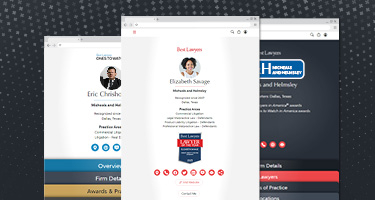On March 18, 2020, the President signed into law the Families First Coronavirus Response Act. This Act addresses the virus on multiple fronts, the most important for employers being an emergency paid sick leave and emergency FMLA expansion.
EMERGENCY PAID SICK LEAVE ACT
The Families First Coronavirus Response Act created mandatory federal paid sick leave for employees unable to work due to the virus.
Covered Employers: Employers with less than 500 employees. However, the Act gives the Secretary of Labor authority to exclude certain health care providers and emergency responders, as well as small businesses with fewer than 50 employees where the imposition of these requirements would jeopardize the viability of the business.
Qualifying Sickness: The employee qualifies for paid sick leave if any of the following keeps them from working, even remotely:
- The employee is subject to a Federal, State, or local quarantine or isolation order related to the virus;
- A health care provider advises the employee to self-quarantine due to COVID-19 related concerns;
- The employee is experiencing symptoms and is seeking medical diagnosis;
- The employee is caring for someone who is subject to a quarantine order, either by the government or a health care provider;
- The employee is caring for a child whose school, place of care, or care provider is unavailable or closed;
- The Secretary of Health and Human Services, Secretary of the Treasury, and the Secretary of Labor can consult and designate substantially similar qualifications.
Benefit: Full time employees are entitled to 80 hours of paid sick leave. Part-time employees are entitled to the average number of hours they work over a two-week period. That is their hours-based benefit allotment.
The employer must pay the employee for hours they would have normally been scheduled or expected to work, up to their allotment. For part-time employees with varying week-to-week schedules, the employer can look at the employee’s six-month average of hours, or if the employee was not there for six months, the hours the employee expected to work.
The Act splits the rest of the benefit calculations based on the qualifying categories above.
Qualifying Reasons 1-3 (care of self):
Rate: Same rate for the hours they would have worked, for a total of their allotted hours (above).
Maximum Benefits: Capped at $511.00 per day or $5,110.00 total per employee.
Qualifying Reasons 4-6 (care of others):
Rate: Two-thirds of their normal rate for the hours they would have worked, for a total of their allotted hours (above).
Maximum Benefits: Capped at $200.00 per day or $2,000.00 total per employee.
Notes:
- Begins April 1, 2020.
- No length of service requirement.
- These are new paid sick leave benefits, and are in addition to any policy the employer may already have in place. The employer cannot make the employee use accrued sick leave, PTO, or vacation days before using these benefits.
- The employer cannot require that the absent employee find a replacement employee to cover their hours.
- The Act prohibits discrimination against employees who utilize this benefit or file a complaint relating to this Act.
- The employer can require the employee to follow reasonable notice protocols for their absence.
- The benefits do not carry over year by year.
- Failure to pay this benefit is considered failure to pay minimum wage.
- The Secretary of Labor will be issuing guidelines on calculating benefits by the time the Act is implemented.
- The Secretary of Labor has created a poster that all employers will be required to display. Click here to download
EMERGENCY FMLA CHANGES
The “Emergency Family and Medical Leave Expansion Act” section of the Families First Coronavirus Response Act changed FMLA benefits in response to certain COVID-19 issues. The following changes will be in effect until the end of the year.
Covered Employers: ALL employers with fewer than 500 employees. However, the Act permits the Secretary of Labor to exempt certain businesses with less than 50 employees if application would “jeopardize the viability of the business as a going concern.”
Eligible Employees: ANY employee employed with the covered employer for 30 calendar days.
Qualifying Need: If an employee cannot work (even remotely) due to a need for leave to care for a minor child if the child’s school, place of care, or child care provider is closed or unavailable due to a public health emergency.
FMLA Emergency Benefits
Paid Sick Leave: There is no paid leave for the first 10 days. Instead, this period is covered under the paid sick leave, above. After those 10 days, the employer provides two-thirds of the employee’s regular pay, for the normal hours the employee would have been scheduled. If the hours vary, take the average over the employee’s previous six-months. If the employee did not work for the previous six months, use the reasonable time the employee expected to work at the time of hiring. This benefit is capped per employee at $200.00 per day or $10,000.00 total.
Job Protection: While the traditional FMLA structure requires the employer to restore the employee to their pre-leave position, this Act makes an exception. If the employer has less than 25 employees, and the employee’s position no longer exists due to economic conditions related to the public health emergency, then the employer only needs to make “reasonable efforts” to restore the employee to a similar position. If there is no such position, the employer must contact the employee if a similar position comes available within a year.
TAX CREDITS
The Act allows employers to take a credit against their portion of the Social Security taxes for 100% of the sick leave and FMLA benefits paid under the Act.
This situation is rapidly changing and we could see new responses tomorrow – even at the state level. We are still monitoring the situation and should know more about small business and health care exemptions as the Secretary of Labor issues guidance. Until then, contact one of our employment attorneys for specific questions or counsel.
Click here for a print friendly pdf version of this content
Please visit our COVID-19 Resource Center for more information related to the Coronavirus outbreak.























